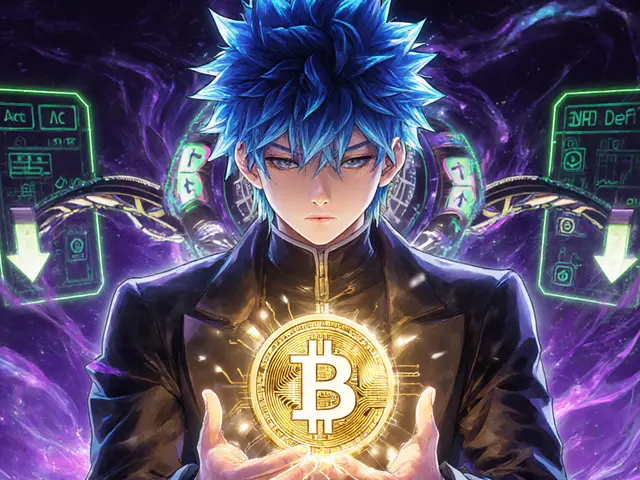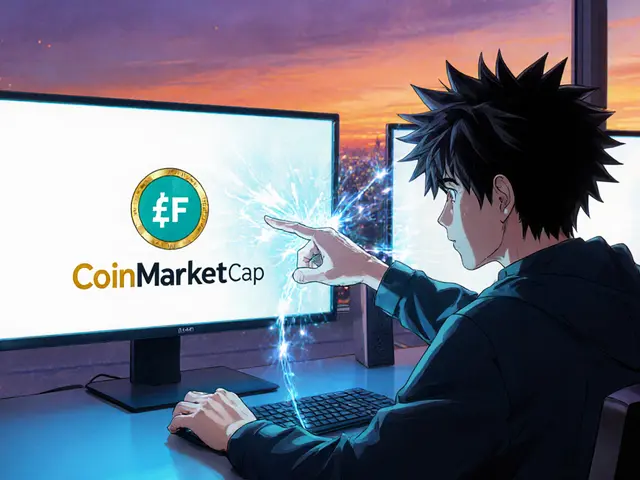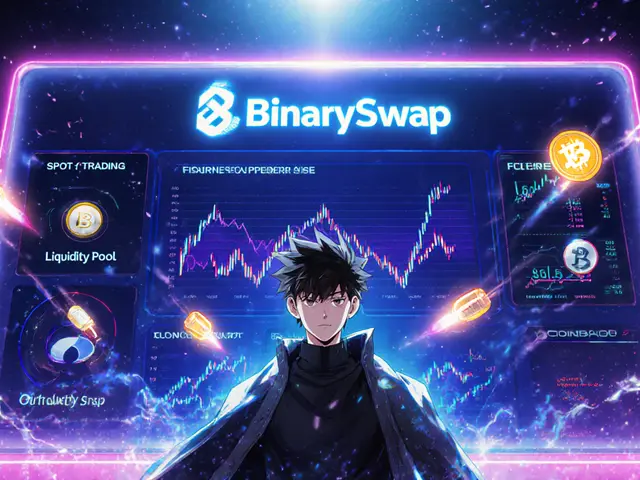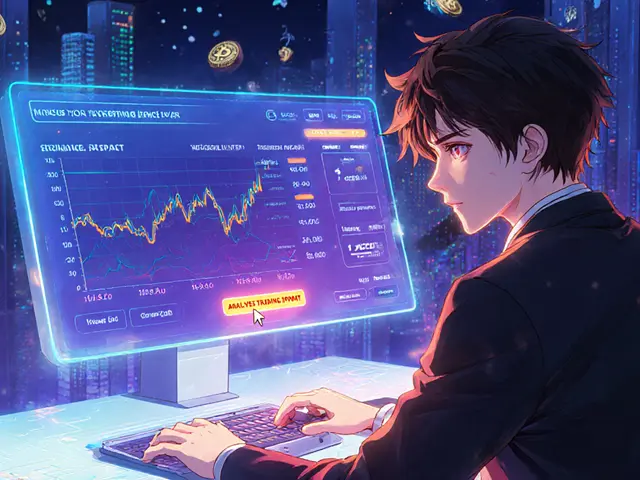Play-to-Earn Earnings Calculator
Calculate Your Earnings
Your Estimated Results
Imagine stepping into a game where your character’s outfit isn’t just pixels on a screen-it’s an NFT you bought, sold, and traded like real-world art. Where the concert you attend isn’t a video stream, but a live event happening in real time with thousands of real people, all wearing avatars you helped design. This isn’t science fiction. It’s metaverse gaming, and it’s already here.
What Metaverse Gaming Really Means
Metaverse gaming isn’t just another genre. It’s the collapse of boundaries between games, social networks, economies, and identity. Traditional games end when you turn off the console. Metaverse games never stop. They exist 24/7, evolving with every player’s action. You don’t just play in them-you live in them.Think of Roblox, where kids build entire worlds and sell virtual shirts for real money. Or Fortnite, where Travis Scott’s virtual concert drew 12 million live attendees. These aren’t anomalies. They’re blueprints. The metaverse turns gaming from a pastime into a persistent digital life.
And it’s growing fast. By 2025, the metaverse market will hit $103.6 billion. Gaming makes up the biggest chunk of that. Why? Because people don’t just want to play-they want to belong. To own. To earn.
How Blockchain Makes It Real
Without blockchain, the metaverse is just a fancy simulation. With it, it becomes a real economy.Blockchain gives you true ownership. In a regular game, your rare skin or weapon belongs to the company. They can delete it. Change the rules. Shut down the server. Game over.
In a blockchain-powered metaverse, your items are stored on a public ledger. They’re tied to your wallet, not the game’s database. That means you can sell your dragon armor on OpenSea. You can take it from one game to another-if the developers allow it. You can lend it. Rent it. Pass it down like an heirloom.
That’s where NFTs come in. Non-fungible tokens are digital certificates of ownership. They’re unique. Irreplaceable. Verifiable. In games like Axie Infinity or The Sandbox, NFTs represent characters, land, weapons, even clothing. And because they’re built on blockchains like Ethereum or Polygon, they’re secure, transparent, and portable.
It’s not just about collectibles. It’s about control. You’re no longer a customer. You’re a stakeholder.
Play-to-Earn: When Gaming Pays the Bills
In the Philippines, some players earn more from Axie Infinity than from their day jobs. In Nigeria, teens trade NFTs to pay for school fees. In Brazil, families run virtual farms to buy groceries.This isn’t a fringe trend. It’s play-to-earn (P2E)-a model where your time, skill, and strategy directly translate into real income. You don’t just kill monsters. You farm resources. You craft items. You complete quests. And you get paid in cryptocurrency or NFTs you can cash out.
It’s not all gold mines and easy money. Many P2E games require upfront investment. You might need to buy three Axies to start playing. That’s $100-$500. But for people in countries with low wages and high inflation, that’s an investment, not a luxury. And many have recouped their costs within weeks.
The key difference? In traditional games, you spend money to have fun. In blockchain games, you spend money to make money. The line between leisure and labor is gone.
The Tech Behind the Magic
You can’t have a metaverse without the right tools. And the tools are getting better.VR headsets like Meta Quest 3 and Apple Vision Pro let you step inside these worlds. Haptic suits give you the feeling of wind, impact, even touch. Motion tracking turns your real movements into avatar actions. No more button mashing. You swing your arm to swing a sword. You nod to say yes.
But hardware alone isn’t enough. Cloud gaming is making it accessible. You don’t need a $2,000 PC. With services like NVIDIA Cloud Gaming or Xbox Cloud, you can run high-end metaverse games on a tablet or old laptop. All you need is Wi-Fi.
And behind the scenes, AI is making NPCs smarter. They remember your name. They react to your mood. They learn from how you play. In Decentraland, you might chat with a virtual shopkeeper who knows you bought a sword last week-and now offers you a discount on armor.
Who’s Building This World?
It’s not just startups. Big players are all in.Microsoft is investing billions into Mesh, its mixed-reality platform. They’re building tools so companies can host virtual meetings, training sessions, and even product launches in the metaverse. Imagine a sales team in Auckland, a designer in Tokyo, and a CEO in New York all standing together in a virtual boardroom made of floating islands.
Roblox is a playground for 70 million daily users, mostly under 16. But it’s also a job market. Developers there earn millions by creating games and virtual goods. One teen built a game that made over $10 million in a year.
Decentraland lets you buy virtual land-real estate that’s actually owned by users. A plot near the virtual fashion district sold for $2.4 million. People are building galleries, casinos, and even schools there.
And it’s not just tech companies. Nike, Gucci, and Adidas have all opened virtual stores. You can buy digital sneakers that your avatar wears-and sometimes, you can get a discount on the real pair if you own the NFT.
Challenges No One Talks About
This isn’t a utopia. There are real problems.First, accessibility. VR headsets still cost $300-$1,000. Not everyone can afford them. And for people with disabilities, many metaverse platforms aren’t designed for them. No voice navigation. No screen reader support. No adaptive controls.
Second, privacy. Your avatar’s movements, voice, and social connections are data. Who owns that? Who can sell it? There are no clear rules yet.
Third, scams. Fake NFT drops, rug pulls, phishing wallets-there’s a lot of noise. One user in Australia lost $80,000 after clicking a link that looked like a legitimate game update. It wasn’t.
And then there’s the environmental question. Blockchain isn’t always green. Ethereum used to be energy-heavy. But since switching to proof-of-stake in 2022, its energy use dropped 99.95%. Still, skepticism remains.
What’s Next? The Future Is Already Here
The next big shift? Cross-platform metaverses. Right now, each world is a walled garden. You can’t take your Roblox hat into Decentraland. But companies are working on standards-like the proposed Open Metaverse Interoperability Group-that would let assets move freely between platforms.Imagine walking out of your virtual home in Horizon Worlds, hopping into a concert in Fortnite, then heading to a virtual job interview in Microsoft Mesh-all with the same avatar, the same wallet, the same items.
And as AI gets smarter, your digital self will start acting on its own. Need to earn some crypto while you sleep? Your AI avatar could complete daily quests for you. It’s not far off.
The definition of "gamer" is gone. Now, you’re a digital citizen. You don’t just play games. You build economies. You own property. You earn income. You socialize. You create.
The metaverse isn’t replacing gaming. It’s expanding it into something bigger than we’ve ever seen.
Is metaverse gaming only for people with VR headsets?
No. While VR offers the deepest immersion, many metaverse platforms like Roblox, Decentraland, and The Sandbox work perfectly on PCs, tablets, and smartphones. You can explore, socialize, and even earn crypto without stepping into a headset. Cloud gaming services are making high-end experiences accessible on low-end devices too.
Can you really make money from metaverse games?
Yes, but it’s not guaranteed. Play-to-earn games like Axie Infinity and StepN have helped thousands earn income, especially in developing countries. However, most require an upfront investment to start. Success depends on skill, time, and market conditions. Treat it like a side hustle, not a get-rich-quick scheme.
Are NFTs in games just overpriced pixels?
It depends. If you’re buying a skin that only works in one game and has no resale value, then yes-it’s just pixels. But if the NFT is transferable, verifiable, and usable across platforms, it’s a digital asset with real economic value. Think of it like a limited-edition sneaker: its worth comes from scarcity, demand, and utility, not just how it looks.
Is the metaverse just a hype bubble?
Some parts are. Many projects have failed, and investor excitement has cooled since 2022. But the core technologies-blockchain, VR, AI, and cloud gaming-are advancing rapidly. Companies like Microsoft, Meta, and Nvidia aren’t walking away. They’re building the infrastructure. The hype may be fading, but the foundation is staying.
What’s the biggest risk in metaverse gaming?
The biggest risk isn’t technical-it’s financial and legal. You could lose money to scams, hacked wallets, or sudden game shutdowns. Regulatory frameworks are still catching up. In some countries, earning crypto from games might be taxed as income or even banned. Always do your research, use secure wallets, and never invest more than you can afford to lose.









Comments (15)
Marcia Birgen
November 14, 2025 AT 23:50 PMThis is literally the future and I'm here for it 🎮✨ Imagine your kid's birthday party in the metaverse with everyone in custom avatars dancing to a live DJ set. We're not just playing games anymore-we're building communities. So much potential!
Gaurang Kulkarni
November 16, 2025 AT 02:24 AMPeople act like blockchain gaming is magic but the truth is most of it is just gambling with extra steps and bad UI No one cares about your NFT dragon armor unless you can sell it for more than you paid and even then the gas fees eat half your profit
Jerrad Kyle
November 17, 2025 AT 05:13 AMY'all are missing the forest for the trees. This isn't about NFTs or crypto or even VR. It's about ownership. For the first time ever, players aren't tenants in a digital apartment-they're homeowners. That shift changes everything. In Nigeria, teens are using Axie Infinity to pay for textbooks. In Brazil, families are growing virtual crops to buy rice. This isn't gaming. It's economic liberation wrapped in pixels.
Usama Ahmad
November 17, 2025 AT 13:41 PMI started playing The Sandbox last month and honestly it's wild how easy it is to make a little cash just by designing simple land plots. My cousin in Delhi made $300 last month just selling virtual trees. Not life changing but hey it's extra coffee money
Nathan Ross
November 17, 2025 AT 17:35 PMThe metaverse is a carefully constructed illusion designed to extract value from the gullible under the guise of innovation. Companies want you to believe your digital sneakers are worth something so you'll keep buying them while they quietly collect your biometric data. You are not a stakeholder. You are a data point with a wallet
garrett goggin
November 19, 2025 AT 00:08 AMOh wow so now my 12 year old nephew is gonna become a crypto millionaire by trading virtual hats while his parents work two jobs to pay rent? Yeah right. This is just the same pyramid scheme they sold us with MLMs and crypto coins except now they added a headset and called it innovation. The only thing growing here is the number of people getting scammed
Bill Henry
November 19, 2025 AT 15:05 PMI tried Roblox on my iPad last weekend and was shocked how smooth it was. My daughter made a whole game about dragons and sold hats for Robux. She's 9. She's already better at this than I am at my job. We need more of this not less
Jess Zafarris
November 20, 2025 AT 16:09 PMYou say ownership but who owns the platform that owns the blockchain that owns your NFT? It's still centralized. Meta still controls the servers. Microsoft still controls the cloud. The only thing decentralized is the illusion. You're trading one gatekeeper for another with more fees and worse customer service
jesani amit
November 21, 2025 AT 06:47 AMI live in Mumbai and I know guys who play Axie daily and make more than their office jobs. Yeah you need to spend upfront but think of it like buying a fishing rod. If you know how to use it you can feed your family. It's not magic it's work. And honestly? It's better than sitting in a call center for 8 hours a day
Peter Rossiter
November 21, 2025 AT 14:55 PMNFTs are just digital graffiti with a receipt and people paying for it like it's art. The metaverse is a glorified chatroom with bad graphics and overpriced pixels
Mike Gransky
November 21, 2025 AT 15:01 PMThe real story here isn't the tech or the money. It's the people. I've seen elderly users in Ohio make friends in Decentraland they never had in real life. I've seen kids with autism find confidence through avatars that let them express themselves without fear. That's not hype. That's humanity. Don't let the noise drown out the quiet wins.
Ella Davies
November 22, 2025 AT 02:35 AMI've been watching this space for years. The hype cycles are real. The tech is real too. Most projects fail. But the ones that survive? They change everything. The infrastructure is being built. It's slow. It's messy. But it's happening.
Henry Lu
November 22, 2025 AT 03:58 AMYou think you're pioneering the future but you're just another peasant buying virtual dirt while the real billionaires sit back and collect the rent. Your NFTs are worthless. Your avatar is a joke. The metaverse is a playground for the delusional and a cash grab for the elite
nikhil .m445
November 23, 2025 AT 20:31 PMThis is not gaming. This is a scam. Real people do not own anything in digital space. All these NFTs are just numbers in a database controlled by big tech. You think you are smart but you are being fooled. Even in Philippines they are losing money. I know because I read the news.
Rick Mendoza
November 24, 2025 AT 09:59 AMThe metaverse is the next bubble and you're all just pawns in a game designed by Silicon Valley to extract your attention your data and your money. The only thing that will survive is the infrastructure. The rest? Just digital dust